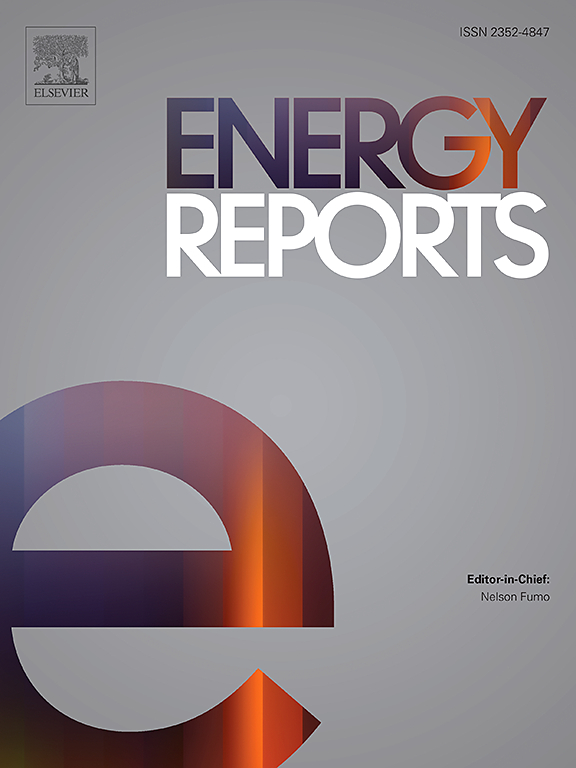西非太阳能热水系统的实际性能:对家庭和三级设施的多地点研究
IF 5.1
3区 工程技术
Q2 ENERGY & FUELS
引用次数: 0
摘要
太阳能热水器(SWHs)具有减少电力需求和支持撒哈拉以南非洲能源转型的潜力。然而,它们的实际性能和经济可行性仍未得到充分探索,特别是在能源使用模式和气候条件各异的西非城市。本研究评估了安装在四个不同城市环境中的SWHs的技术、经济和环境绩效:瓦加杜古(布基纳法索)的一家医院洗衣房和一家酒店,以及瓦加杜古和洛姆罗耶(多哥)的两个家庭。该系统代表了萨赫勒和潮湿的热带气候,以及不同的太阳能热技术(平板,集成集热器存储和玻璃水真空管集热器)。使用长达一年的监测数据(酒店为四年),根据太阳能效率、年发电量和二氧化碳排放量对系统性能进行评估。在各种情况下进行了生命周期成本分析,以估计投资回收期。系统效率范围为19 % ~ 41 %,其中lomoire的真空管集热器表现最好。对于取代电热水器的家用SWHs来说,简单的投资回收期很短(lomoire为2.4年,瓦加杜古为2.7年),这使得它们在经济上最具吸引力。相比之下,取代燃气或木炭的SWHs的简单投资回收期更长,可达7.6年。最高的年减排,0.98吨二氧化碳·m−2,观察到家庭应用。即使在具有挑战性的环境中,基于热虹吸的SWHs也显示出了巨大的能源和环境效益。它们在西非的广泛应用将需要改进维护、激励机制、适应当地燃料价格和具体情况的系统设计。本文章由计算机程序翻译,如有差异,请以英文原文为准。
Real-world performance of solar water heating systems in West Africa: a multi-site study of domestic and tertiary installations
Solar water heaters (SWHs) have the potential to reduce electricity demand and support energy transitions in sub-Saharan Africa. However, their real-world performance and economic viability remain underexplored, particularly in West African cities, where energy usage patterns and climate conditions are heterogeneous. This study evaluated the technical, economic, and environmental performance of SWHs installed in four distinct urban settings: a hospital laundry and a hotel in Ouagadougou (Burkina Faso), and two households—one in Ouagadougou and one in Lomé (Togo). The systems represent both Sahelian and humid tropical climates, as well as different solar thermal technologies (flat-plate, integrated collector storage, and water-in-glass evacuated tube collectors). Using year-long monitoring data (four years for the hotel), system performance was assessed in terms of solar efficiency, annual energy yield, and CO2 emissions avoided. A life-cycle cost analysis was conducted under various scenarios to estimate payback periods. System efficiency ranged from 19 % to 41 %, with the evacuated tube collector in Lomé performing best. For household SWHs that replace electric water heaters, the simple payback period was short (2.4 years in Lomé and 2.7 years in Ouagadougou) making them the most economically attractive. In contrast, SWHs replacing gas or charcoal had longer simple payback periods, up to 7.6 years. The highest annual emission savings, 0.98 tCO2·m−2, were observed for household applications. Even in challenging environments, thermosiphon-based SWHs have demonstrated substantial energy and environmental benefits. Their broader adoption in West Africa will require improved maintenance, incentive schemes, and adaptation to local fuel prices and context-specific system design.
求助全文
通过发布文献求助,成功后即可免费获取论文全文。
去求助
来源期刊

Energy Reports
Energy-General Energy
CiteScore
8.20
自引率
13.50%
发文量
2608
审稿时长
38 days
期刊介绍:
Energy Reports is a new online multidisciplinary open access journal which focuses on publishing new research in the area of Energy with a rapid review and publication time. Energy Reports will be open to direct submissions and also to submissions from other Elsevier Energy journals, whose Editors have determined that Energy Reports would be a better fit.
 求助内容:
求助内容: 应助结果提醒方式:
应助结果提醒方式:


